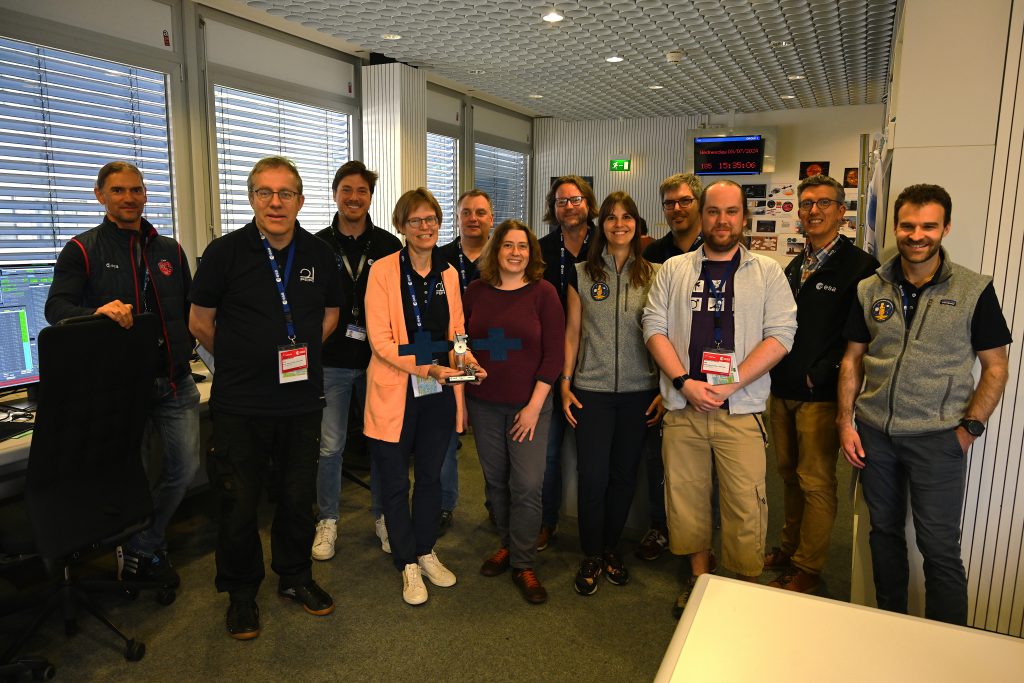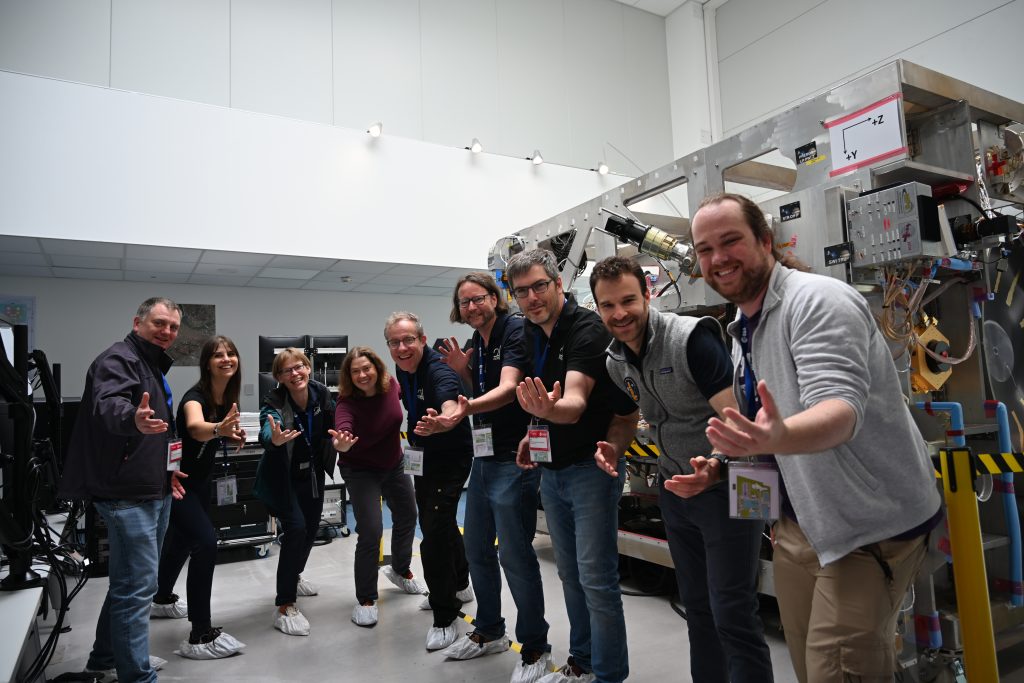There are some special visitors at ESA’s ESOC mission control this week. The teams behind the PEP and MAJIS instruments on ESA’s Juice mission to Jupiter are in Germany to carry out their latest routine instrument checkout. These checkouts take place roughly once every six months during Juice’s cruise phase and help keep the instruments in top condition throughout the voyage.

This checkout, however, is a little different. The Juice operations and instrument teams will use it as an opportunity to carry out a ‘dry run’ of August’s first-of-its-kind lunar-Earth flyby.
The dry run will see Juice’s cameras and instruments operated as they will be during the real double flyby on 19—20 August. The activity will help ensure that all of Juice’s systems react exactly as expected and reduce the already small risk associated with the manoeuvre.
The instrument checkout is now complete, and the teams are ready to monitor the dry run, which will go through the events of the two flybys in real time over the weekend.

While at ESOC this week, the Particle Environment Package (PEP) instrument team visited the Juice control room. This is the room from which Juice’s operations team uploaded PEP’s most recent software update – a common activity during a routine instrument checkout.

The PEP team also visited the Juice engineering model at ESOC, which features functional replicas of the instrument’s six sensors spread across the spacecraft. This was the first chance for the team to see their hardware in person since it left their institute in Kiruna, Sweden.
An engineering model doesn’t just replicate the physical parts of a spacecraft – it also runs the same software as the flight model. As preparation for this week’s instrument checkout, Juice’s control team validated the PEP and MAJIS software updates by first running them on the engineering model.
Follow this blog for updates, or follow @esa_juice, @esascience and @esaoperations on X.

Discussion: 2 comments
A list of the meaning of the abbreviations used in the Timeline tool would be greatly appreciated.
Recently, NASA’s Europa Clipper project announced problems with transistor components, I wonder if this could also become an issue for JUICE.